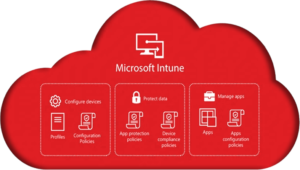App Controller is one of the many pieces of System Center 2012. App Controller is very specialized, requiring either Virtual Machine Manager or Windows Azure to function. App Controller allows administrators the ability to put a self-service portal in front of their VM infrastructure. App Controller was introduced with SC 2012, and totally replaced the VMM Self Service Portal in System Center 2012 SP1.
App Controller can serve two functions. It can provide a self-service portal for end users to create their own VM’s. This integrates well with VMM’s concept of a private cloud, where VMM administrators allocate a set of resources to a person or group, instead of allocating VM’s. This private cloud concept allows users of the VM system to create and manage their own resources, as long as they stay inside the defined set of resources. App Controller provides a web interface for creating VM’s, instead of all users of VMM needing to install the VMM console.
Second, App Controller allows for the management of applications and services, instead of just VM’s. Resources can be added to these applications and services. In the private/public cloud model and in App Controller, applications are managed as services.
App Controller allows users to do both of these items from a simple-to-use web console. App Controller, along with VMM’s private-cloud concept, simplifies the management of large-scale VM implementations.
Installation
Installation of App Controller is very simple. Download the installation file or ISO. Most installations of App Controller are done on the VMM management server. If you do not install it on the VMM management server, you must install the VMM management console. The App Controller installer will enable IIS for you if it is not already enabled. It also configures the website to use SSL for you, as long it can find a certificate on the machine. Because of what the system controls, an SSL certificate is best practice. After installation, launch the website. In the middle of the start page is button to tie App Controller to a VMM environment. This step needs to be completed, even if installed on the VMM management server. You can also tie it to an Azure subscription from the same screen. One instance of App Controller can control many instances of VMM or Azure subscriptions.
Once you tie App Controller to VMM, you can view and management templates, create VM’s and services, and manage users. This is a great tool for anyone using VMM or Azure.
Disclaimer
All content provided on this blog is for information purposes only. Windows Management Experts, Inc makes no representation as to accuracy or completeness of any information on this site. Windows Management Experts, Inc will not be liable for any errors or omission in this information nor for the availability of this information. It is highly recommended that you consult one of our technical consultants, should you need any further assistant.





